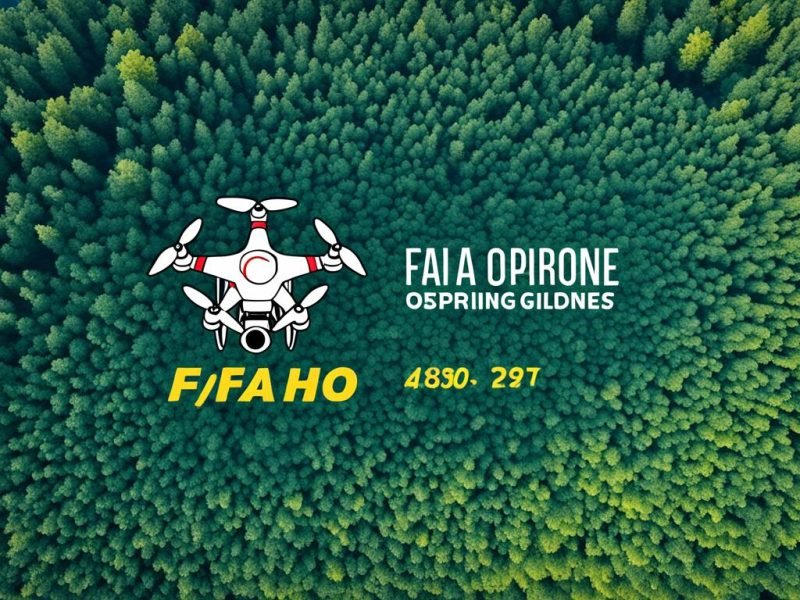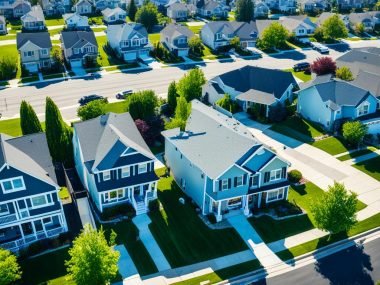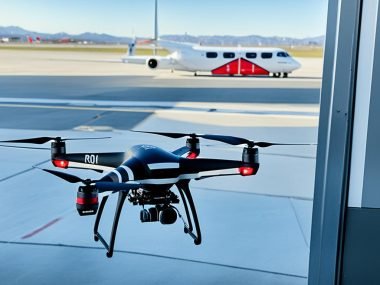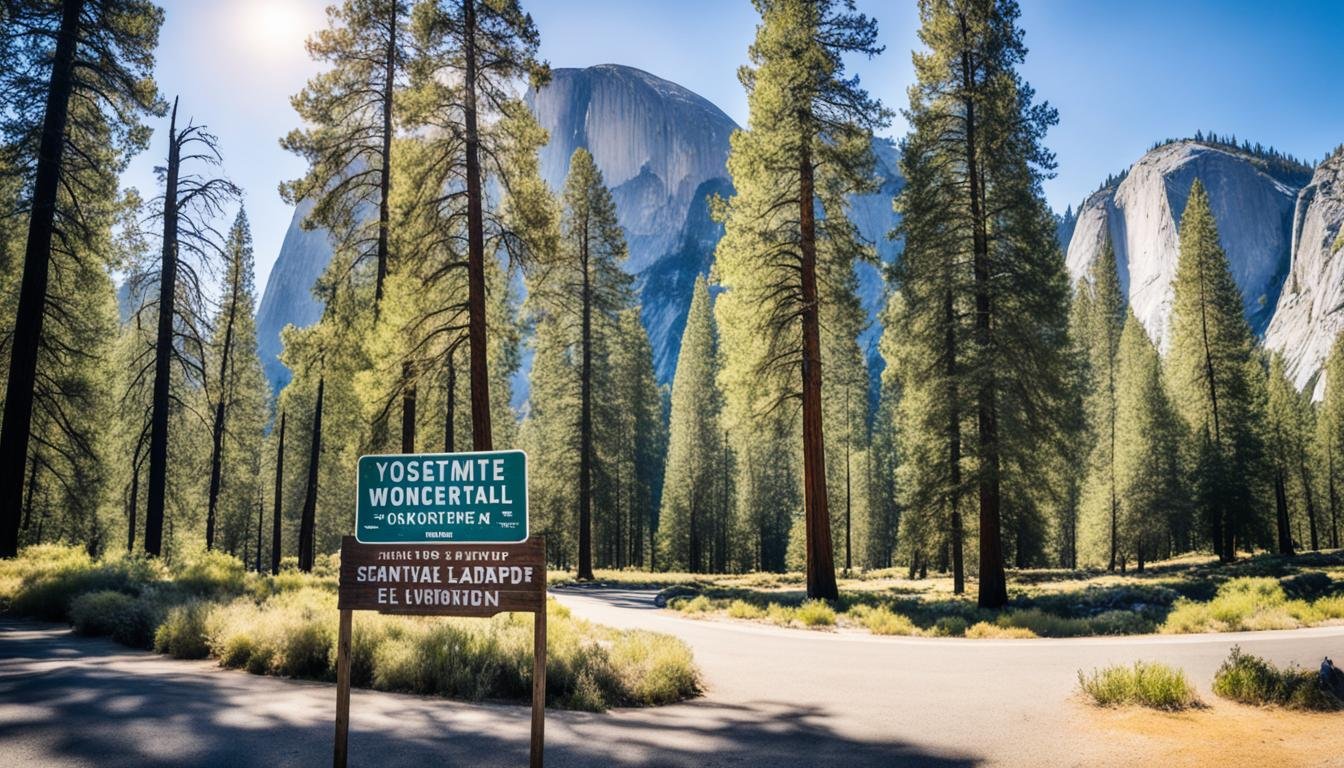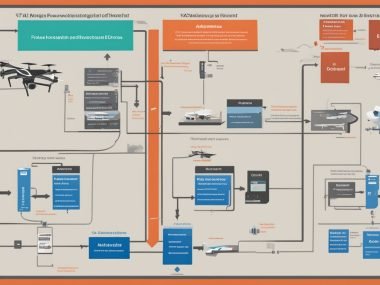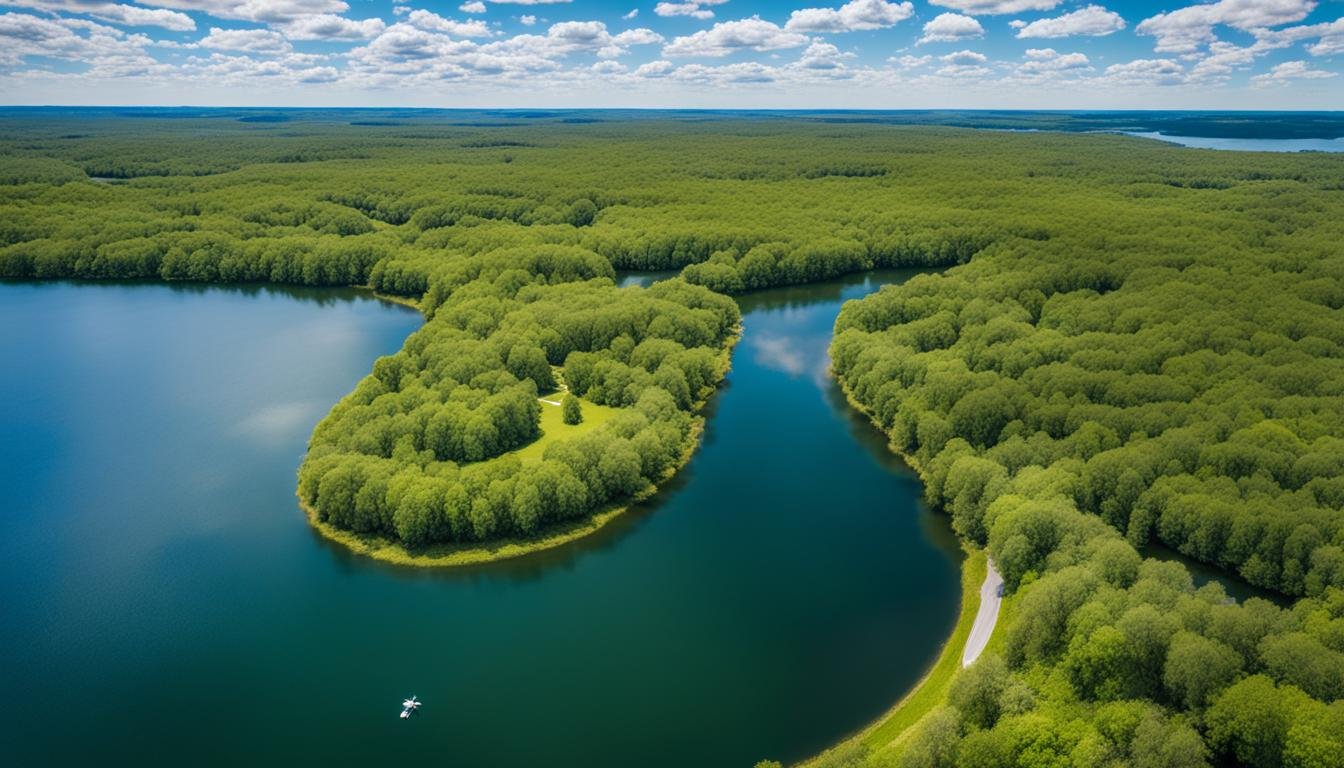As of 2021, the U.S. had over 1.7 million registered drones. Many are used by hobbyists, while others are for commercial or different purposes. This large number shows the urgent need for clear drone rules. Such rules help drones share the sky safely with manned aircraft in the National Airspace System.
Flying a drone isn’t just a hobby anymore. For both fun and work, following FAA drone guidelines is key. These are not optional tips but must-follow rules from the Federal Aviation Administration (FAA). They cover everything from registering your drone to keeping it out of no-fly zones. Every drone pilot is responsible for flying safely and legally.
Keeping up with legal changes can be tough for drone fans and professionals. But I’m dedicated to following these rules closely. It protects my love for flying and keeps the skies safe. Let’s explore these rules and see what safe drone flying under the FAA’s watchful eyes means.
Key Takeaways
- The huge number of drones in the U.S. shows why we need strict drone rules.
- FAA drone guidelines help keep order and safety in the National Airspace System.
- Legal flying requirements include registering drones, avoiding no-fly zones, and using special apps for airspace awareness.
- Pilots must keep up with regulation changes, with new rules since 2024 affecting drone flying.
- Both hobby and commercial pilots must follow a set of legal rules to safely include drones in national airspace.
Understanding the FAA’s Authority Over Drone Flights
If you fly a drone, you should know about the Federal Aviation Administration (FAA). They play a key role in making sure air traffic flows smoothly. They set the rules for drone owners and pros. This helps everyone fly safely.
What is the FAA and its role in drone operations?
The FAA’s main goal with drone rules is to keep the skies safe. They make sure drone pilots follow the rules. This keeps everything running smoothly in the air.
The scope of FAA’s regulations in the National Airspace System
The FAA’s rules aren’t meant to limit fun. They help prevent problems in the sky. The FAA sets limits on how high you can fly and where you can fly.
They also require drones to be registered. This way, no drone can fly anonymously in the vast sky.
| FAA Regulation | Requirement | Purpose |
|---|---|---|
| Registration | Drones exceeding 0.55 lbs must be registered | Accountability and identification |
| Altitude Limit | Flights capped at 400 feet above ground level | Prevent conflicts with manned aircraft |
| Airspace Authorization | Required for controlled airspace near airports | Safety and traffic management |
| Remote ID | Broadcast location and telemetry | Transparency and tracking |
As a drone pilot, I’ve seen how important these rules are. They let us enjoy the sky without risking safety. Following these guidelines allows all of us to enjoy the world from above safely.
General Guidelines for Drone Pilots in the USA
As a drone pilot in the USA, I must follow the drone flying laws set by the FAA. These rules are key for flying legally and safely. One rule is to fly my drone at or below 400 feet to keep away from manned aircraft. Also, the drone must be lighter than 55 pounds unless it’s specially certified.
It’s a must to keep my drone in sight at all times. This rule is for safety and is required by law. It means I keep control and can monitor my drone’s path without just using its camera or GPS.
Avoiding No Drone Zones is absolutely critical. These are places where flying is risky, like near national parks, military bases, and airports. For updates on airspace rules, the B4UFLY Mobile App is super helpful.
| Rule | Details | Why It Matters |
|---|---|---|
| Maximum Altitude | 400 feet above the ground | Limits potential conflicts with manned aircraft. |
| Weight Restriction | Less than 55 pounds | Minimizes damage in case of accidents or malfunctions. |
| Visual Line of Sight | Must always be maintained | Ensures direct control and awareness of the drone’s location. |
| No Drone Zones | Avoid sensitive areas | Protects security and privacy, as well as preventing damage to property. |
By following these rules, I can enjoy flying without causing trouble. It’s all about respecting the balance between using new tech and following the law. This way, we keep the skies safe for everyone.
FAA Drone Registration: A Mandatory Step for Drone Owners
If you love drones or fly them professionally, here’s a tip. Make sure you register with the FAA. This is crucial whether you’re enjoying the view from above or working on inspections. By following the FAA registration, you’re flying legally and safely.
Criteria and procedures for drone registration
Registering your drone is easy to understand. If it weighs over 0.55 pounds, you need to register at the FAA’s DroneZone. You’ll give your details, your drone’s info, and pay a small fee. After registering, you get a unique number for your drone.
Importance of displaying registration numbers on drones
Putting that number on my drone makes me proud to be among aerial enthusiasts. It shows we care about flying responsibly. This number helps find the drone’s owner if something goes wrong. It’s key for keeping the skies safe.
| Registration Step | Details |
|---|---|
| Create an Account | Sign up on the FAA’s DroneZone portal. |
| Enter Drone Specifications | Submit drone make and model along with personal information. |
| Receive Registration Number | A unique number is issued for attachment to the drone. |
| Mark Drone | Affix the number on the drone exterior before the first flight. |
| Renew as Required | Ensure to renew the registration to continually comply with FAA regulations. |
The big lesson is about our community responsibility. Attaching my drone’s number before flying highlights my commitment. It’s a simple act, but it tells others that my flight is safe and open. It’s a way to respect and love flying technology.
The Line Between Recreational and Commercial Drone Use
Flying drones is fun as a hobby and can also be a serious business. It’s key to know the rules that apply. For fun activities, I follow simple guidelines under recreational drone operations. A major rule for hobbyists like me is passing the TRUST exam. This test proves I know the rules for flying drones safely for fun.
For those flying drones as a job, the rules are stricter. They must have Part 107 certification. This ensures they understand complex airspace, weather conditions, and safety procedures. Drones can be used for stunning photos or checking crops. Either way, the Part 107 certificate is a must-have.
Whether flying for fun or work, prioritizing safety is something all pilots share. That’s why registering your drone is essential. It must be known and traceable within the National Airspace System. Below is a summary of what both types of flying involve:
| Aspect | Recreational Operations | Commercial Operations |
|---|---|---|
| Mandatory Test | TRUST exam | Part 107 Certification |
| Purpose of Flight | Personal enjoyment | Economic benefit or business activities |
| Registration Requirement | Yes, for drones over 0.55 pounds | Yes, for all drones used commercially |
| Safety Guidelines | Follow the regulations of a recognized Community Based Organization | Strict adherence to FAA safety regulations |
| Flight Restrictions | Maintain visual line of sight, avoid restricted airspace without authorization | May include flying at night, over people, and beyond line of sight with waivers |
Whether flying for pleasure or business, I respect all flying rules. Drones play a big role in our skies. Knowing and following these rules isn’t just about following the law. It’s about promoting safety and responsibility in the air.
If you’re thinking of flying a drone, decide why first. Is it for fun or business? Your answer decides if you need the TRUST exam or Part 107 certificate. Every flight I plan starts with this choice. This way, my passion for flying meets legal standards.
Restrictions on Drone Flights: From Airspace to Airports
If you love flying drones, it’s important to know the rules. In the U.S., there are areas where you can’t fly your drone. These include No Drone Zones and controlled airspaces. They keep our skies safe and organized.
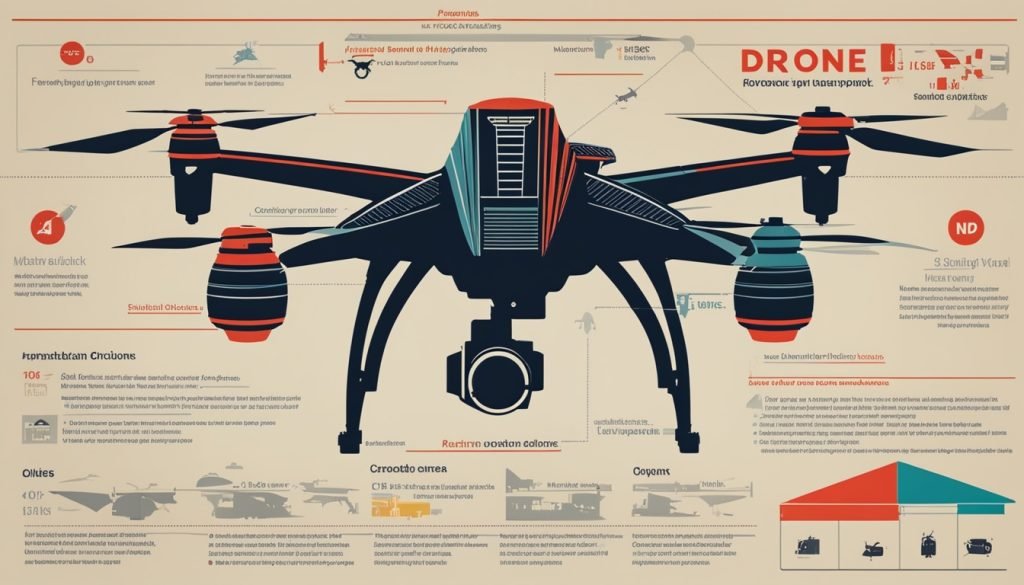
Identifying No Drone Zones and Controlled Airspaces
As a drone pilot, I must know where not to fly. No Drone Zones are near landmarks, government buildings, and parks. Controlled airspaces need special permission. I use the FAA’s B4UFLY app to check these zones before I fly.
Rules and Restrictions Near Airports and Other Critical Infrastructure
Flying near airports has strict rules. This is because drones can be dangerous to planes. The airspace is divided into classes. For Class B, C, D, and E, I need permission from the LAANC system. This keeps flights safe and avoids fines.
| Airspace Classification | Description | Restrictions for Drones |
|---|---|---|
| Class B | Surrounds the nation’s busiest airports | Requires authorization and communicates with ATC |
| Class C | Surrounds airports with moderate to high traffic | Authorization required and drone size limits may apply |
| Class D | Surrounds airports with an operational control tower | Fly below 400 feet with authorization |
| Class E | Controlled airspace not classified as A-D | Authorization varies by area; special attention needed |
Remote ID and Broadcasting Requirements
Drone technology is becoming a big part of our lives, making it critical to keep the skies organized. The start of Remote ID marks a big step towards this goal. It’s like digital fingerprints for drones in the sky, helping identify unmanned aircraft quickly. This move is key for allowing new drone activities. It’s not just about following the FAA Remote ID requirements, but about using our airspace responsibly and innovatively.
Understanding the concept of Remote ID
Remote ID is like a car’s license plate but for drones. It shares important info like the drone’s position and speed in real-time. This info is shared with others in the sky and with tracking systems on the ground. Meeting FAA Remote ID requirements is a must for the safety and efficiency of our airspace. So, Remote ID makes monitoring drones easier. It also builds trust in drones as their numbers grow.
How drones meet compliance with Remote ID regulations
To follow drone broadcasting compliance, new drones come with the needed Remote ID tech. There are also add-ons for older drones. This way, all drones, whether for fun or work, follow the law. Drones used for amazing photos or fast package delivery can be easily identified and tracked.
My drone experience has taught me to respect the craft and its space. That’s why I see Remote ID as a key part of drone responsibility. Many drones now come ready to meet the FAA Remote ID requirements, making it easy to follow the rules. These rules make everyone more confident about drones. They help drones safely share the sky and bring new tech benefits to society.
Legal Implications and Penalties for Rule Violations
As a drone enthusiast, I know the importance of following FAA enforcement action rules. It’s crucial for me and my fellow pilots to understand the penalties for drone violations. Not knowing or following safe drone operation rules can lead to big fines or even worse consequences. We need to make sure we use the airspace without causing problems.
Talking openly, it’s important to know what could go wrong if FAA rules aren’t followed. Getting caught flying a drone recklessly can lead to serious penalties. These serve both as a warning and a lesson to the drone community. The FAA is strict because breaking the rules can greatly harm airspace safety.
Here’s a table showing common violations and their fines. I made sure this information is correct and useful by checking official FAA documents and reliable sources.
| Violation | Penalty | Note |
|---|---|---|
| Flying in restricted airspace | $1,000 to $2,000 fine | Severity may increase depending on proximity to critical areas. |
| Endangering manned aircraft | $3,000 to $5,000 fine | Includes potential criminal charges. |
| Flying above 400 feet | $500 to $1,500 fine | Altitude violations treated less severely but still penalized. |
| Lack of drone registration | $250 to $500 fine | Mandatory for all drones above 0.55 lbs (250 grams). |
| Non-compliance with Remote ID | $1,000 to $2,000 fine | Important for newer models that require broadcasting ID. |
Remember, these numbers are not fixed. They may change based on the specifics of the violation. The FAA looks closely at each situation before setting the fine.
To stay clear of FAA enforcement action, I follow a pre-flight checklist. This ensures my drone and I meet safe drone operation rules. A little effort beforehand can prevent penalties for drone violations and keep the skies safe for everyone.
Joining drone communities or forums is a good idea too. Experienced pilots there can give valuable advice. It’s vital to keep learning about new rules to avoid accidents and penalties.
Drones are becoming a big part of both work and play. We all must help keep our flying safe and legal. Just taking a minute to check the rules before flying can make a big difference. It can help avoid serious issues that come with breaking the law.
Navigating State-Specific Drone Regulations and Laws
Diving into drone piloting has shown me how crucial state-specific drone laws are. They’re as important as federal regulations. The interaction between federal vs. state drone regulations is complex but necessary to understand. It’s key to follow both federal laws and the added rules from each state.
State versus federal regulations: What drone pilots should know
Learning about state regulations is essential in my drone piloting journey. States can have their own drone operation rules, which might not be in the FAA laws. For example, flying over private property or near prison facilities might be restricted. Ignoring these laws could lead to trouble.
How to stay informed on changing state drone laws
One great method to stay current with these laws is to check state government aviation sites. Teaming up with local aviation groups also helps. They offer updates and details on state-specific drone laws. Joining drone hobbyist groups and online forums for sharing tips and law changes is also useful.
| State | Unique State Regulation | Federal Alignment |
|---|---|---|
| California | Prohibits the use of drones over state parks without a permit | Partially, depending on park regulations |
| Florida | Restricts drone use over critical infrastructure | Aligned with federal critical infrastructure guidelines |
| New York | Bans drones in NYC, except in designated parks | More restrictive than federal |
| Texas | Limits drone photography over private property | Complements federal privacy concerns |
International Drone Pilots: Flying in the U.S. With a Foreign Aircraft
Drones from all around the world fill our skies. International UAS operators and foreign drone pilots in the USA face special rules. The FAA looks after both American and foreign drone pilots flying here. These rules help keep the skies safe and fair for everyone.
Specific guidelines for non-U.S. citizens flying drones in the U.S.
Drone fans from other countries need to follow FAA rules. Planning to fly your drone on vacation or a trip? Register it through the FAA’s DroneZone. This ensures every drone is tracked for public safety.
Foreign drone pilots in the USA wanting to do business face tougher rules. International UAS operators must register and get a special permit. Working with the FAA and DOT shows a promise to fly safely and legally in the U.S.
Remember, every pilot shares the sky. By following these rules, drone pilots from anywhere can enjoy flying in the U.S. They also meet the expectations of American air rules.
Best Practices for Conflict Resolution and Respectful Flying
Drone tech is growing fast. We must fly drones respectfully to follow laws and build good relations. It’s key to talk openly with the community, handle privacy worries, and teach about drones. This helps stop issues before they start.
Engaging the Community and Addressing Privacy Concerns
I make sure to really listen to what people say about privacy. By understanding their views, I can explain how drones work. We use wide-angle cameras for our pictures. Telling folks about the use and tech behind drones can ease their worries. This way, talks about drone issues start with everyone knowing the facts.
De-escalating Conflicts with the Public and Law Enforcement
If a problem comes up, I stay calm and talk things through. It’s important to know your rights and share them nicely. This approach can change a tough moment into a helpful chat. Using guides like The Photographer’s Right helps clear up legal stuff for everyone.
| Action | Benefit |
|---|---|
| Proactive engagement with the community | Prevents conflicts and builds trust |
| Educating on drone capabilities | Addresses privacy concerns and dispels myths |
| Calm dialogue during confrontations | Fosters understanding and respect |
| Utilizing The Photographer’s Right document | Provides legal clarity on image capture rights |
The practice of respectful drone flying is not only about adhering to the law but also about how we address privacy concerns and engage in drone conflict resolution with a harmonious spirit.
Conclusion
As a drone pilot, my main goals are safety and following the law. I stick to FAA rules to keep the skies safe for everyone. This is key because drone technology is growing fast. It’s my job to know and follow the rules set by the authorities.
I work hard to know the laws about drones. This makes sure I do not harm the airspace or people’s rights. It’s important for me to lead by example in the drone world. I promote safe and legal flying practices.
My simple rule in flying drones is to be honest and considerate. I respect the laws that keep us safe. By doing so, I help make sure drones have a positive future. This future is filled with new inventions and harmony with the world below.

